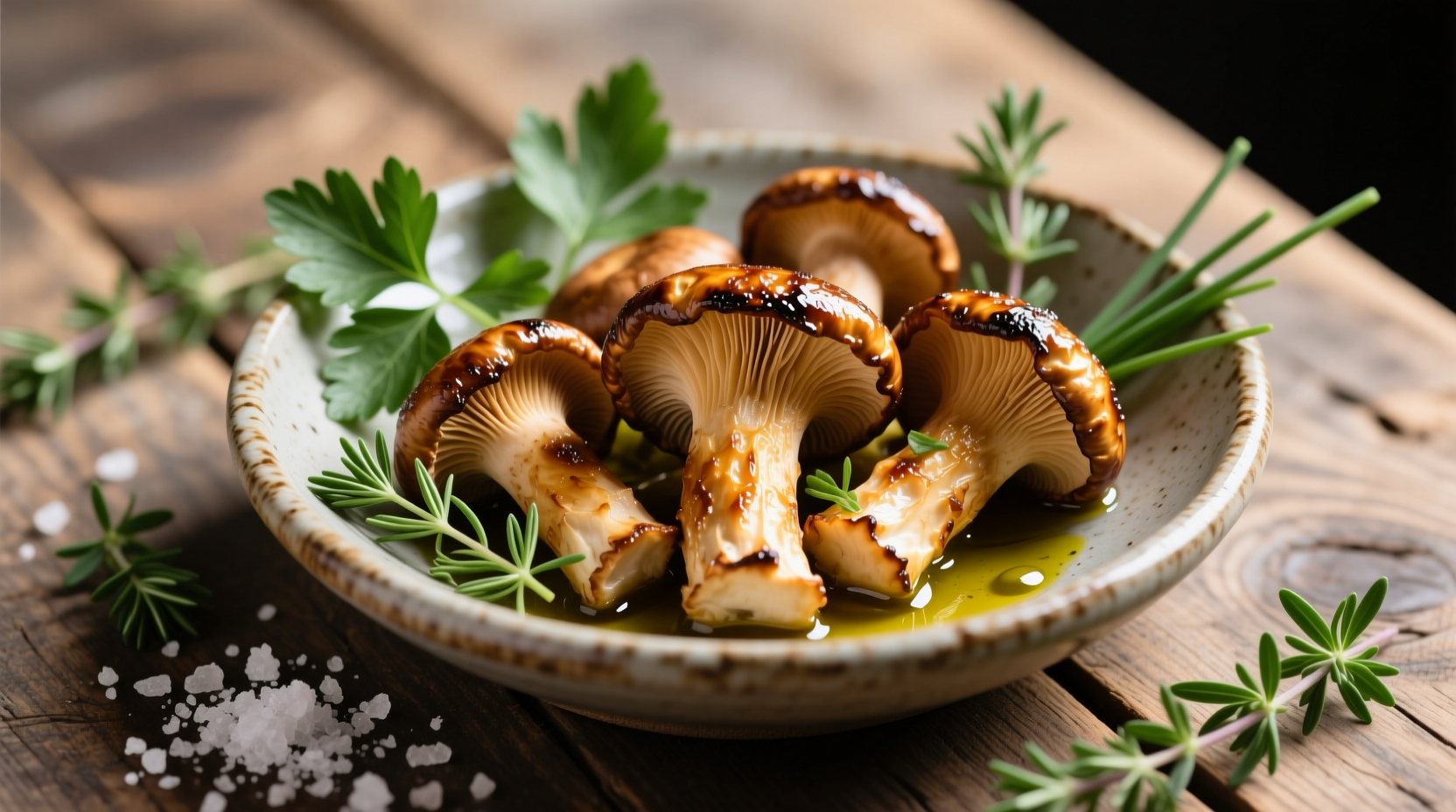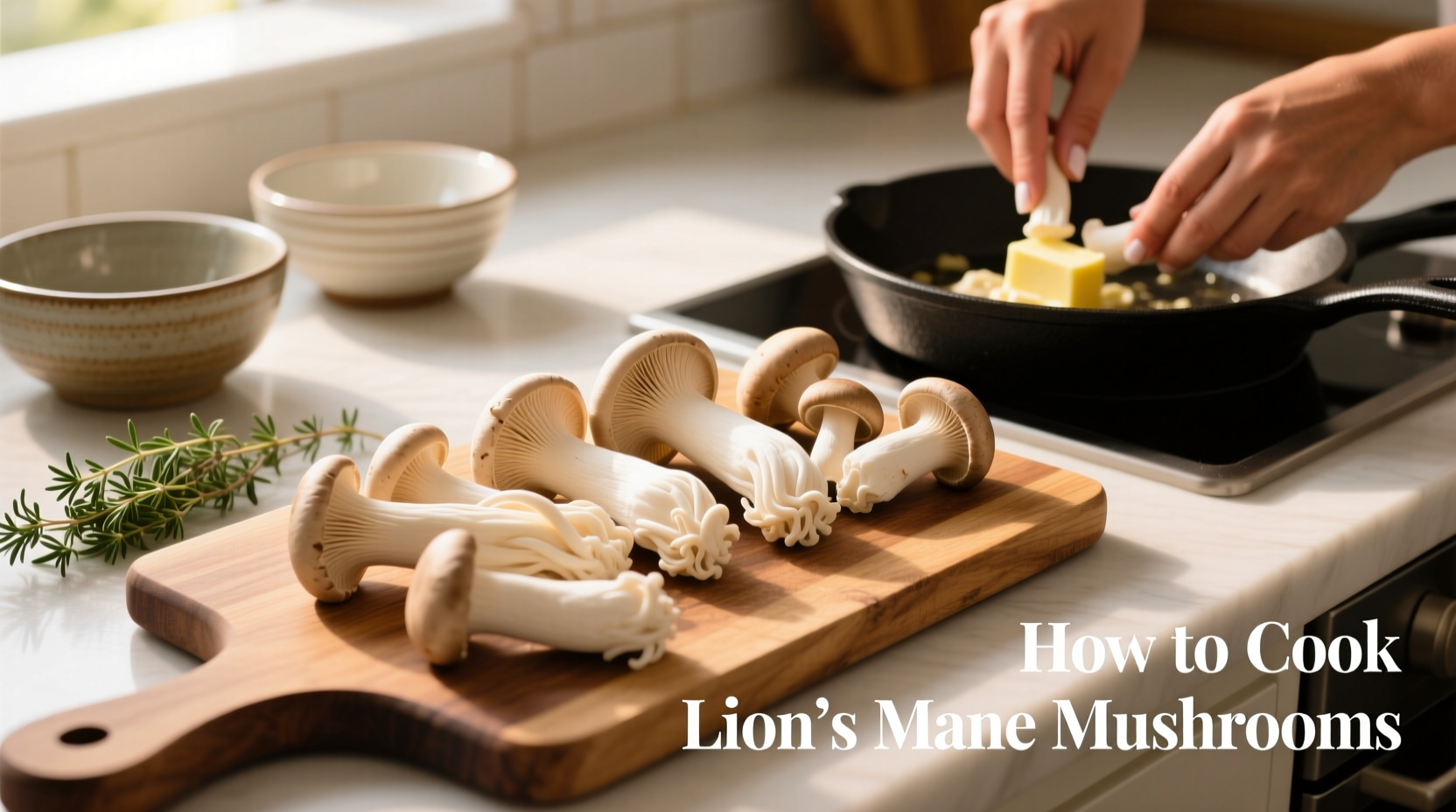Discover exactly how to transform lion's mane mushrooms into a culinary masterpiece with this comprehensive guide. Whether you're a beginner cook or an experienced chef, you'll learn professional techniques for preparing, cooking, and serving lion's mane mushrooms that maximize their unique texture and flavor profile. This guide covers every step from selecting fresh specimens to plating elegant dishes that impress.
Understanding Lion's Mane Mushrooms Before Cooking
Lion's mane mushrooms (Hericium erinaceus) stand out in the culinary world for their distinctive appearance and remarkable ability to mimic seafood textures when properly cooked. Unlike button or cremini mushrooms, lion's mane features delicate, cascading spines rather than a cap and stem structure. When cooked correctly, they develop a tender, flaky texture reminiscent of lobster or scallops, making them a favorite among chefs and home cooks alike.
Before you begin cooking, it's crucial to understand that lion's mane mushrooms contain more moisture than many other varieties. This characteristic significantly impacts cooking technique—proper moisture management separates acceptable results from truly exceptional dishes. The mushrooms' high water content means they'll release liquid during cooking, and understanding this process prevents common mistakes like steaming instead of searing.
Essential Preparation Steps
Proper preparation sets the foundation for successful cooking. Follow these critical steps before heating your pan:
Cleaning Technique
Never soak lion's mane mushrooms. Instead, use a soft brush or damp paper towel to gently remove any debris from between the spines. For particularly dirty specimens, quickly rinse under cold water and immediately pat dry with clean kitchen towels. Excess moisture is the enemy of proper browning, so thorough drying is non-negotiable.
Slicing for Optimal Results
Slice lion's mane into ½-inch thick pieces, following the natural separation points between clusters. Thinner slices work well for quick sautés, while thicker portions (¾ to 1 inch) hold up better for roasting or grilling. The goal is uniform thickness to ensure even cooking—irregular pieces will result in some portions becoming rubbery while others overcook.
| Cooking Method | Best Thickness | Texture Result | Flavor Development |
|---|---|---|---|
| Pan-searing | ½ inch | Scallop-like, tender | Rich umami, caramelized edges |
| Roasting | ¾ inch | Firm yet yielding | Concentrated earthy notes |
| Grilling | 1 inch | Meaty with char marks | Smoky complexity |
| Quick sauté | ¼ inch | Delicate, almost pasta-like | Subtle mushroom essence |
Mastering the Cooking Process
The transformation from raw mushroom to culinary delight happens through careful temperature control and timing. Here's how to execute each step perfectly:
Pan-Searing: The Gold Standard Method
Heat a heavy skillet (cast iron works best) over medium-high heat until a drop of water sizzles immediately. Add 1-2 tablespoons of high smoke-point oil (avocado or grapeseed oil) and wait until shimmering but not smoking. Arrange mushroom slices in a single layer without crowding—this is critical for proper browning rather than steaming.
Let the mushrooms cook undisturbed for 3-4 minutes until a deep golden crust forms. Resist the urge to move them prematurely. Flip with a thin spatula and cook another 3-4 minutes until tender but still holding their shape. The internal temperature should reach 145°F (63°C) for optimal texture.
For restaurant-quality results, finish with a pat of butter, fresh thyme, and a squeeze of lemon juice during the last minute of cooking. The butter creates a glossy sheen while the acid brightens the earthy flavors.
Alternative Cooking Methods
Roasting: Toss prepared mushrooms with oil, salt, and pepper. Spread on a parchment-lined baking sheet in a single layer. Roast at 425°F (220°C) for 18-22 minutes, flipping halfway through, until deeply caramelized and tender.
Grilling: Brush thicker slices with oil and grill over medium heat for 4-5 minutes per side. The high heat creates beautiful char marks while preserving the delicate texture.
Quick Sauté: For delicate applications like pasta dishes, slice thinly and cook over high heat for just 2-3 minutes with garlic and herbs.
Flavor Pairing Strategies
Lion's mane mushrooms serve as a culinary canvas that absorbs surrounding flavors while contributing their own subtle sweetness. Professional chefs leverage these pairings:
- Seafood-inspired: Combine with butter, lemon, fresh parsley, and a touch of white wine for that signature "surf and turf" effect
- Umami boosters: Pair with soy sauce, miso, or dried mushrooms to enhance natural savory notes
- Herb complements: Thyme, rosemary, and tarragon work particularly well with their earthy profile
- Creamy elements: Finish with a light cream sauce or crème fraîche to create luxurious texture contrast
Avoid overpowering the mushrooms with strong spices. Their delicate flavor shines when complemented rather than masked. A simple preparation often yields the most impressive results.
Critical Mistakes to Avoid
Even experienced cooks make these common errors when preparing lion's mane mushrooms:
- Overcrowding the pan: Causes steaming instead of searing—cook in batches if necessary
- Excessive handling: Moving mushrooms too frequently prevents proper crust formation
- Insufficient seasoning: These mushrooms need generous salt to bring out their natural flavors
- Undercooking: They require full cooking to develop their signature texture (unlike some mushrooms)
- Using low smoke-point oils: Olive oil can burn at the necessary temperatures—choose higher smoke-point alternatives
Storage and Freshness Tips
For optimal cooking results, use lion's mane mushrooms within 2-3 days of purchase. Store them in a paper bag (not plastic) in the refrigerator's vegetable drawer. Avoid washing until ready to cook, as excess moisture accelerates spoilage.
If you have leftovers, store cooked mushrooms in an airtight container for up to 3 days. Reheat gently in a skillet rather than the microwave to preserve texture. Never freeze raw lion's mane mushrooms, as this destroys their delicate structure—cooked portions can be frozen for up to 2 months.

Putting It All Together: A Simple Recipe
Apply these techniques with this professional-inspired recipe that consistently delivers impressive results:
- Clean and slice 1 pound lion's mane into ½-inch thick pieces
- Heat 2 tbsp avocado oil in cast iron skillet over medium-high heat
- Arrange mushrooms in single layer without crowding
- Cook undisturbed for 4 minutes until golden brown
- Flip and cook 3-4 minutes more until tender
- Add 2 tbsp butter, 2 minced garlic cloves, and 4 sprigs fresh thyme
- Cook 1 minute more, basting mushrooms with butter
- Finish with lemon zest and sea salt to taste
This preparation yields restaurant-quality results that showcase the mushroom's unique texture and flavor. Serve immediately as a standalone dish or alongside proteins like chicken or fish.
Frequently Asked Questions
Can you eat lion's mane mushrooms raw?
While technically edible raw, lion's mane mushrooms develop their best texture and flavor when cooked. Raw specimens can have a slightly rubbery texture and muted flavor profile. Cooking transforms their structure into a tender, flaky consistency reminiscent of seafood while enhancing their natural umami characteristics.
Why aren't my lion's mane mushrooms browning properly?
The most common reasons for poor browning are overcrowding the pan (which causes steaming), insufficient heat, or moving the mushrooms too frequently. Ensure your pan is properly preheated, use adequate high smoke-point oil, and let the mushrooms sit undisturbed for 3-4 minutes to develop a proper crust before flipping.
How do you know when lion's mane mushrooms are cooked?
Properly cooked lion's mane mushrooms should have a deep golden-brown exterior with a tender but still slightly firm interior. They should yield gently to pressure but maintain their structure. Overcooked specimens become rubbery or mushy. The internal temperature should reach approximately 145°F (63°C) for optimal texture.
What's the best oil for cooking lion's mane mushrooms?
Choose oils with high smoke points (400°F/204°C or higher) such as avocado oil, grapeseed oil, or refined coconut oil. These withstand the medium-high heat needed for proper searing without burning. Avoid extra virgin olive oil, which has a lower smoke point and can become bitter when overheated.
Can you substitute lion's mane mushrooms in recipes calling for other mushrooms?
Yes, but with important considerations. Lion's mane has a more delicate texture and higher moisture content than button or cremini mushrooms. When substituting, reduce cooking liquid slightly and shorten cooking time by 2-3 minutes to prevent mushiness. Their unique texture works particularly well in dishes where seafood is featured.











 浙公网安备
33010002000092号
浙公网安备
33010002000092号 浙B2-20120091-4
浙B2-20120091-4